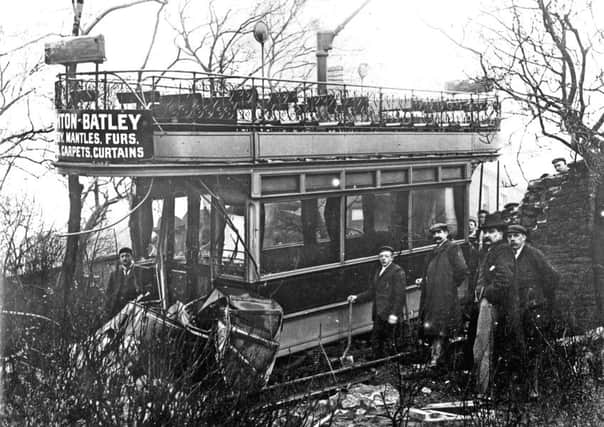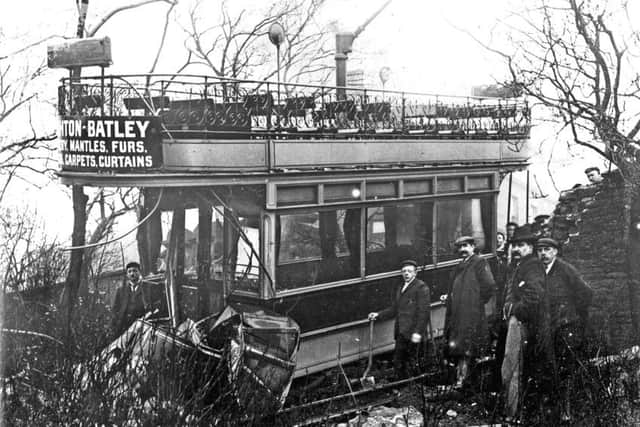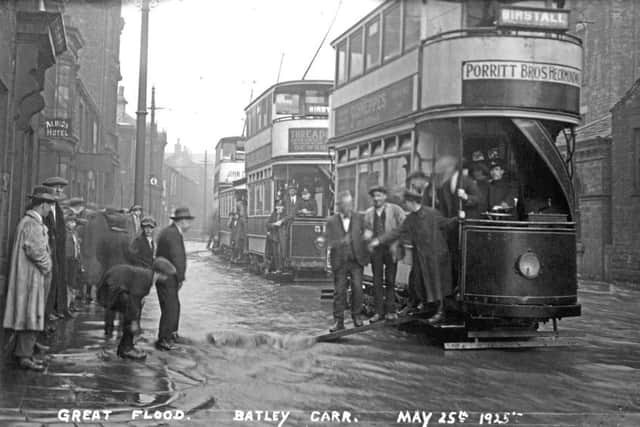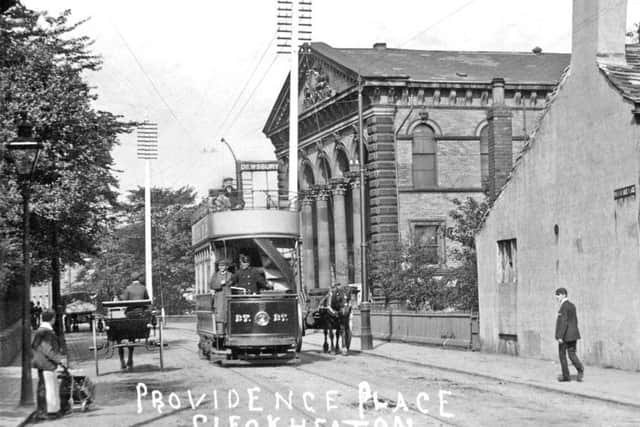Nostalgia on Tuesday: Rise of the tram


Inspected and opened on February 18, 1903, the YWD’s first tram route extended from Dewsbury through Savile Town and Thornhill Lees to Thornhill. On that day, around 9am, two double-deck trams appeared from the Savile Town depot and carried company officials and contractors to collect two Board of Trade inspectors at Thornhill station. Arriving from London, they were Major Druitt (for rolling stock) and Mr A P Trotter (for electrical equipment). Watched by locals who turned out in large numbers, the party proceeded to the Brewery Lane/Lees Hall road junction where a pause was made.
Thornhill Urban District Council (UDC) members pointed out the sharp curve at this point which was a potential hazard for pedestrians with hardly any room when a tram was passing by. After pointing out this situation should have been remedied before track construction, Major Druitt made a ruling for a speed limit of two miles per hour.
Advertisement
Hide AdAdvertisement
Hide AdOn returning to the Savile Town depot, the party boarded single-deck cars to inspect the Ravensthorpe section of the system, as the route involved two low bridges. Members of Dewsbury Corporation boarded near the town’s parish church, before heading along Aldams Road and up Webster Hill until smoothly reaching the borough boundary near the foot of Scout Hill. This section of the system did not open to the public until March 15, 1903.


The route from Dewsbury Market Place to Halifax Road, as far as the Shoulder of Mutton Inn (the borough boundary on this section), was also inspected on February 18. However, the route was not opened until April 18, 1903. The remaining routes were available for passengers during the course of the year including the line from Liversedge to Hightown, as well as the remainder of the Ravensthorpe line to Fir Cottage, both on July 29. The line between Liversedge and Birkenshaw was inspected and opened on October 13, 1903. Suggestions were made by members of Gomersal UDC regarding speed limits in that village, due to the nearness of the school to the tram route.
The Dewsbury to Hick Lane and Hick Lane to Gomersal routes opened in October and November 1905 respectively.
To begin with, the YWD had an operational dispute with Batley Corporation but this was solved after much wrangling when the former agreed to lease track and vehicles from the latter. There was a circular route within Batley and it linked with Halifax Road and Bradford Road, opening on October 26, 1903.
Advertisement
Hide AdAdvertisement
Hide AdThe YWD’s tram depot in Frost Hill, Liversedge, was built by Messrs Sam Drake & Garforth Bros, and comprised 10 tracks, one of which was divided into two. During the following year, Frost Hill depot was provided with a paint shop and a repair bay.


The area on the western side of Dewsbury Market Place was used by the YWD trams. Initially, this comprised two tracks but was later increased to three. The Market Place’s eastern side was used by cars belonging to another tram operator, the Dewsbury & Ossett Tramway Co. The YWD system gave connections to both Bradford (via Birkenshaw) and Wakefield (via Ossett). Also, a joint parcels service was agreed with Bradford Corporation tramways where parcels were exchanged at Birkenshaw.
The YWD system covered steep gradients and there were a number of accidents. In 1904 there were three. In two of them, car no 55 was involved. One calamity occurred on January 16, 1904, shortly before 4pm, when driver Walter Dawer started car no 55 from Thorncliffe Road end for Batley. Only a few passengers were onboard. Quickly, it was noticed the tram was running at great speed along the straight piece of track in Thorncliffe Road – much too fast indeed to ‘negotiate’ the corner in Track Road.
Dawer applied the handbrake with force but it was too late. The car left the rails, and went across the road, forcing it through a 6ft high stone wall which skirted the garden of the residence of Mark Oldroyd, a former Dewsbury MP. The entire body of the car was left standing among the shrubs and the driver lay among the stones and broken glass. The front of one side of the car was completely wrecked and remained in Mr Oldroyd’s garden for several days. No loss of life occurred though several passengers and the driver suffered cuts and bruises.
Advertisement
Hide AdAdvertisement
Hide AdOn May 20, 1904, car no 7 went out of control in Halifax Road, Dewsbury, at Carlton Road on the downward stretch. It collided with a number of carts and drays then another tram travelling to Birkenshaw. The passengers were unhurt but the tram crews and one of the dray men was severely hurt.


On August 29, car no 55 crashed into confectioner George Parrott’s horse-drawn van in Purlwell Lane, Batley. Several people were injured though none seriously. Thereafter car 55 was renumbered, becoming car 60.
With trams facing increasing competition from motorbuses not to mention track deterioration, it was decided in the early 1930s to abandon the YWD tramways. The route from Dewsbury to Cleckheaton was the final section to close.